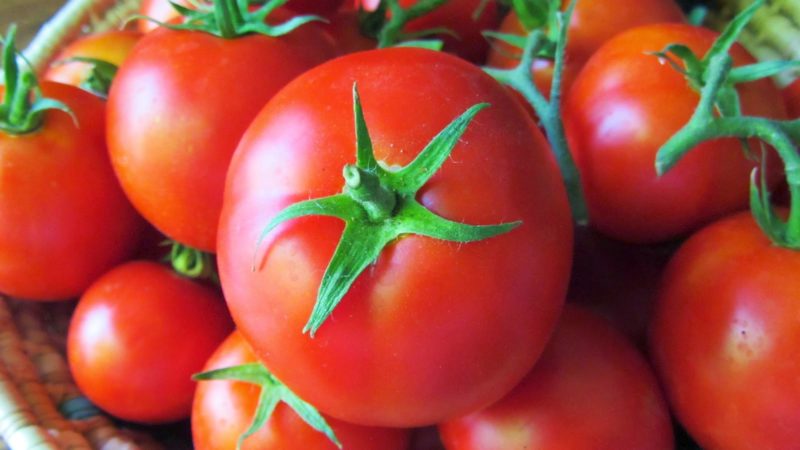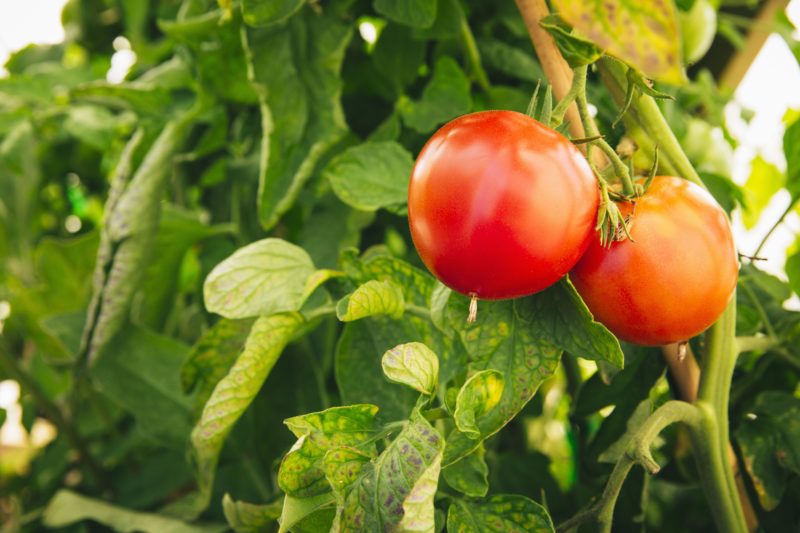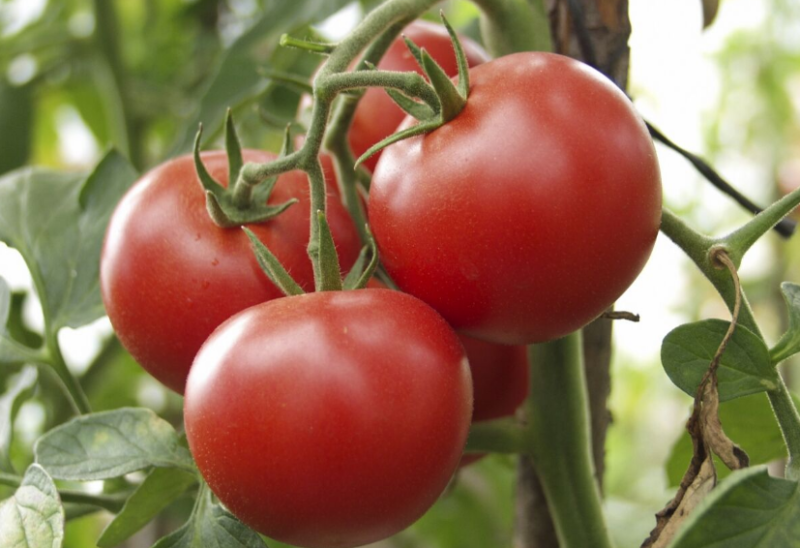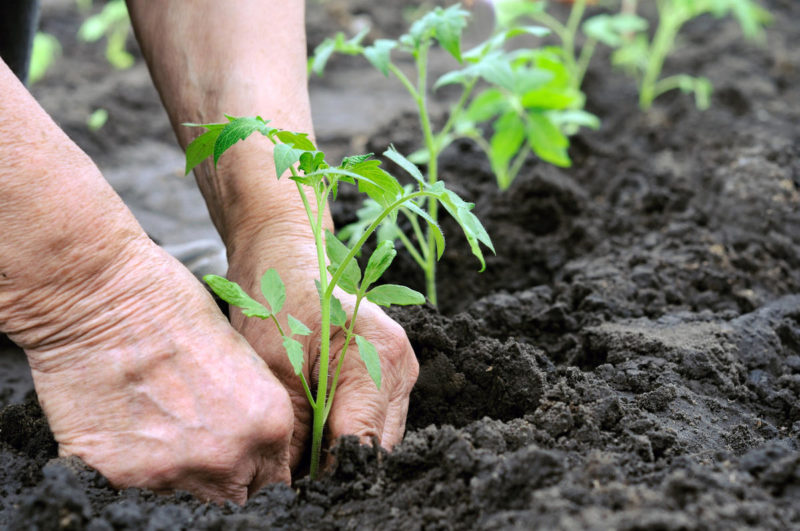Among the variety of popular long-lived tomatoes, Siberian early ripe tomato is especially distinguished. Almost 60 years have passed since its registration in the State Register, but even today it occupies a leading position in popularity in areas with difficult climate conditions. The variety has high quality indicators: ripening time, taste, area of effective cultivation. Tomatoes can be stored, preserved, eaten directly from the branch.
Material Content:
Characterization and description of the variety
In the description of the variety and characteristics of the tomato Siberian early ripening, it should be noted that these are determinant low-growing plants with early onset of fruiting. From the appearance of sprouts above the soil surface to the ripening of the first berries, 100 to 110 days pass.
- These are compact bushes with friendly ripening of a crop.
- Plant height - 30 - 70 centimeters.
- The foliage is dark green of medium size.
- The shape of the fruit is round or rounded flat with a slightly pronounced ribbing, with 4 to 12 chambers (this depends on size).
- Weight varies between 60 - 100 g.
Tomatoes have a traditional taste. They can be considered the first vegetables that appear on our table. They will help restore the deficiency of vitamins C and A, carotene, amino acids and trace elements, which is usually observed in the spring.
Advantages and disadvantages
The success of the variety among gardeners was ensured by its advantages:
- High yield varieties. Fruits do not crack when ripe. Tomatoes weighing up to 600 g grow on a bed.From 1 square meter, you can collect 6 - 7 kilograms of vegetables.
- Early tomato variety. Ripening occurs on 98 - 110 days after emergence.
- Unripe fruits are able to "reach" to full maturity.
- Not afraid of cooling and the vagaries of nature.
- Can be grown in greenhouses or open ground.
- Gardeners note the versatility of the variety.
- Immune to a number of diseases. Not afraid of brown spotting and tobacco mosaic.
But there are varieties and disadvantages. Many gardeners are unhappy that:
- fruits differ in their size;
- the variety is morally obsolete and cannot compete with varieties and hybrids recently bred.
The nuances of growing Siberian precocious tomato
This variety grows beautifully throughout almost all of Russia. Exceptions are the North Caucasus, Volga Region, and the Central Black Earth Region.
The use of fertile soil will help to fully reveal the potential of the variety. Plants prefer slightly acidic, moist, moist soil. To comply with crop rotation rules, it is necessary to select the beds on which cucumbers, onions, cabbage, and legumes grew in the previous season.
Soil preparation for planting tomatoes begins in the fall.
- The beds need to be cleaned of the remnants of tops.
- Dig the soil and make humus or compost.
- In the spring, when warm days arrive, they bring in mineral fertilizers, sawdust, and wood ash.
- The soil is again dug up, and the wells prepared for planting seedlings are watered with a solution of manganese at the rate of 1 g per 10 l of water.
How to grow seedlings
Sowing seeds for growing seedlings should be done in late February - the first half of March. The soil should consist of peat and humus, taken in equal parts.
- Seeds that have undergone preliminary hardening and treatment with growth stimulants are planted to a depth of 1 cm.
- A container with seedlings is covered with a film or glass until seedlings appear to create a greenhouse effect.
- When they appear, the shelter needs to be removed, and the sprouts should be regularly watered and fertilized.
- When two pairs of true leaves appear on plants, seedlings must be dived, transplanted into individual peat pots.
- In the garden, seedlings can be planted when the threat of night frost is over.
Outdoor landing
Gardeners believe that it is best to plant tomato seeds for open ground on seedlings from the second half of May until mid-June. This will help to get a good harvest.
When planting young plants in a garden bed, 10 g of superphosphate should be poured into prepared wells. Seedlings must be planted in 4 rows, tilting the shoot towards the north. Between plants in a row, the distance should be 20 cm, and between rows - 25 - 30 cm.
How to care for tomatoes
When the planted plants grow, it is necessary to begin the formation of bushes in three stems. For this, three main shoots are left, and the rest are cleaned.
It is impossible to allow breaks of tops, contact of foliage and fruits with soil. To avoid this, the shoots must be tied to supports installed next to them.
It is important to prevent flowers from shedding - their preservation affects yield. If this happens, you need to pinch tomatoes. To do this, pinch the top of the shoot over the next inflorescence.
When growing tomatoes of this variety, it is necessary to constantly maintain moderate soil moisture under them. Watered the garden with warm water after sunset. Another main condition is the timely cultivation of soil under the bushes and the removal of weed vegetation.
Disease and Pest Prevention
We must not forget about the prevention of diseases and the appearance of pests. Even such a stable variety is not always able to withstand microbes and parasitic insects that constantly adapt to environmental conditions.
- Insecticides will help prevent the invasion of nematodes, aphids, wireworms, a bear, whiteflies.The method of preparation of the solutions for spraying is indicated on the packaging with the preparations.
- Fungicides will help to resist late blight, gray rot, fusariosis, and alternariosis. Do not overdo it with the dosage. Strictly follow the instructions for use. Usually it is on the package.
No less effective are popular methods of preventing invasion of pests and diseases on tomato bushes. They can be sprayed with garlic or onion infusions. Beds with tomatoes can also be planted with bright flowers - celandine, calendula, marigolds. These plants spread volatile, which fight various pathogens, preventing them from entering, developing and propagating on tomatoes.
How to increase productivity
The Siberian variety is precocious, and for this reason there are only 3 to 4 inflorescences of 5 to 6 flowers on its main stem. To increase productivity, plants do not stepchild or remove only part of the stepsons. This allows you to harvest from the side shoots.
Also, to increase productivity, it is necessary to take the fruits when they reach maturity. In this case, the plant directs forces to the development and ripening of the remaining berries.
Tomatoes must ripen in baskets or cardboard boxes at room temperature.
The fruits of this variety have a thin skin. For this reason, in ripe form, they are poorly preserved.
If you want fresh tomatoes on the table as long as possible - leave them to ripen in a cooler room, but the temperature in it should not be lower than +10 ° C. At a lower, they simply rot.
The fruits of this variety are designed for fresh use. They are suitable for salads. Very juicy. Due to this feature, they are used for the manufacture of tomato juice. More tomatoes are added to soups, sauces, pizzas and, in addition, they are frozen.



















